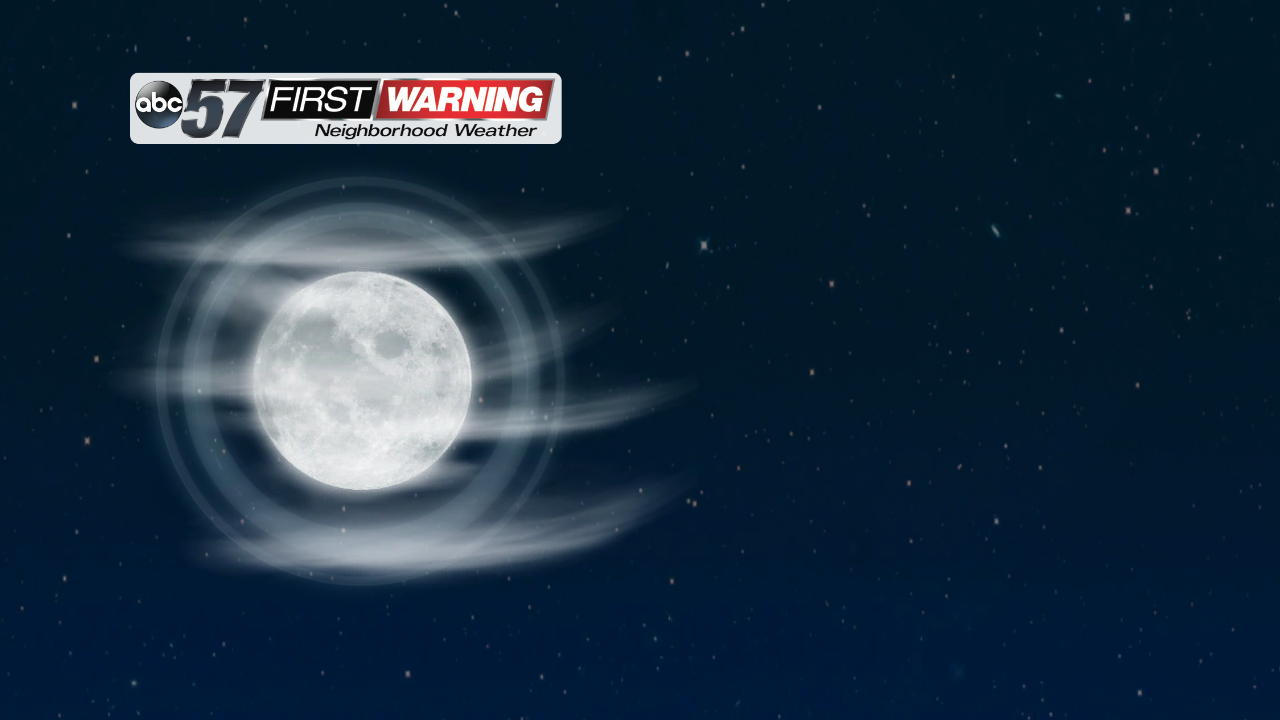What is a 22 degree halo?

-
3:01

Severe storm potential this afternoon
-
1:55

Dash Away 5K lets families run through holiday lights at Elkhart...
-
2:19

Showers arrive overnight, Soggy Sunday
-
0:25

SBFD responds to carbon monoxide call Friday
-
0:45

Settlement reached in data privacy lawsuit against Goshen Health
-
2:20

Mild and cloudy start to weekend
-
3:14

New South Bend social house adds to downtown entertainment hub
-
1:23

Winter returns Monday
-
2:22

University Park Mall packed with shoppers after Christmas
-
0:12

Failure to yield leads to rollover crash at US 31 and S.R. 10
-
3:49

Lonnie Bedwell sets out to ski the grand slam
-
2:02

Light rain this morning, Cloudy by afternoon
There's a pretty cool phenomenon that can occur when high, thin clouds interact with our moon. On mostly clear nights when the moon is most visible in the sky, sometimes there is a halo that appears around the moon. This is caused by a sheet of high, thin clouds called cirrostratus clouds. Ice crystals suspended in the cloud refract the moon's light on its way to our eyes, making it appear as a ring or halo.
 High, thin cirrus clouds create the illusion of rings around the moon the light bends through the clouds.
High, thin cirrus clouds create the illusion of rings around the moon the light bends through the clouds.
In the old days, it was referred to as a sign or omen that bad weather is on the way. This can be true at times but it doesn't always work out that way. High, thin clouds often are out ahead of an incoming low pressure system with rain, but they can form in other ways as well.
There's even a chance we could see one tonight! The moon sets around 1 AM Thursday morning so be sure to look up at the sky tonight, towards the west as the moon sets. You might be able to see some cirrostratus clouds moving in front of the moon, creating that halo effect.

